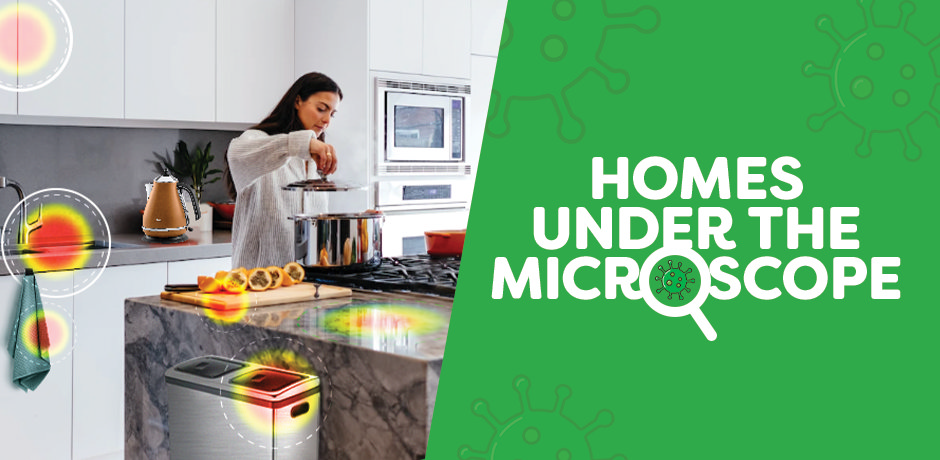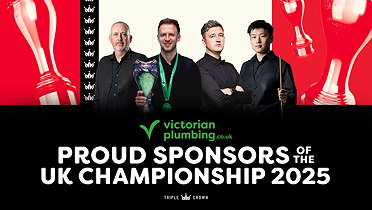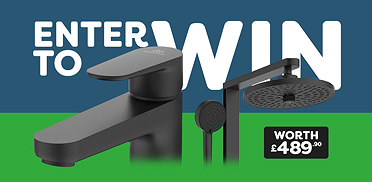UP TO 60% OFF WINTER SALE!
*Free delivery on orders over £499
Homes Under the Microscope
Homes Under the Microscope
Ever wondered what the dirtiest object in your home is? No - it’s not the toilet, it's actually the kitchen sponge! That's right, that trusty sponge you use to clean your dishes could be a breeding ground for bacteria.

Microbiology expert, Dr. Manal Mohammed (she / her) has revealed the top list of bacteria harbouring items in the home, alongside tips on how to clean them. These kitchen areas can harbour various types of bacteria such as Salmonella, E. coli, yeast and mould and can lead to cross-contamination and foodborne illnesses.

THE DIRTIEST HOTSPOTS IN THE KITCHEN ARE:
- Kitchen sponges
- Sinks and taps
- Kitchen cabinet handles, appliance handles and control panels
- Chopping boards
- Kitchen towels (tea towels, dish towels)
- Countertops/kitchen table
- Kitchen bin
- Knife block
- Can opener
- Rubber spatulas
- Cooking utensils
TOP TIPS TO KEEP YOUR KITCHEN CLEAN
- Keep your kitchen sponges clean by disinfecting them once a week by soaking them in vinegar for about 5 minutes. After this, rinse them in water and let them dry. And REMEMBER, to replace your sponges straight away if they smell bad even after disinfection.
- Disinfect your kitchen sink at least once per day, ideally after washing dishes and after meal preparation, using a disinfectant or eco/biodegradable wipes.
- Remember to regularly wipe kitchen cabinet handles, appliance handles and control panels with hot, soapy water or eco/biodegradable wipes.
- For your chopping boards, Dr Mohammed recommends using at least two separate cutting boards, one for raw meats and poultry, and one for fruits and vegetables. Wash them after every use with hot soapy water, then rinse them well with hot water and dry completely.
- Replace tea towels with paper towels or use a new, clean towel for different surfaces in your kitchen. Use bleach or other disinfectants to wash towels before using them again.
- Clean the knife block with hot soapy water, and most importantly dry knives properly before storing them in the knife block.
- Occasionally wash the bin and wash your hands after touching it.
- Can openers need to be washed with hot soapy water, to ensure that food residue is removed from the cutting blades. Then rinse the can opener thoroughly and allow to air dry.
- Avoid cross-contamination with cooking utensils by using separate utensils for different types of food. It is important to clean your cooking utensils by hand washing in hot, soapy water then air dry afterwards.

THE DIRTIEST HOTSPOTS IN THE BATHROOM ARE:
- Toothbrush
- Toothbrush holder
- Toilet
- The bathroom floor
- Door handle/ light switch
- Waste bins
- Bathmat
- Tap
- Showerhead
TOP TIPS TO KEEP YOUR BATHROOM CLEAN AND HEALTHY
- Place your toothbrush as far away from the toilet as possible and rinse it after each use. Most importantly, replace your toothbrush or toothbrush head regularly.
- Clean your toothbrush holder regularly.
- Put the toilet lid and seat down when flushing to prevent the spread of germs. Most importantly, please wash your hands thoroughly - you detty pig - after using the toilet to prevent cross-contamination.
- Mop the bathroom floor regularly and deep clean it weekly or bi-weekly.
- Empty waste bins before they are full and clean them regularly.
- Hang your towel to dry and wash it every three to four days.
- Ensure your bath mat is dry, hang it up after use and wash it regularly
- Clean your tap and shower head regularly to prevent the growth of mould.
So, next time you are cleaning your home, don’t forget to pay extra attention to these often-overlooked areas. And remember, prevention is the key to keeping your home clean and healthy!

Sarah
Sarah is one of our resident bathroom experts here at Victorian Plumbing. She loves writing helpful bathroom design and DIY articles, as well as detailed buying guides.


